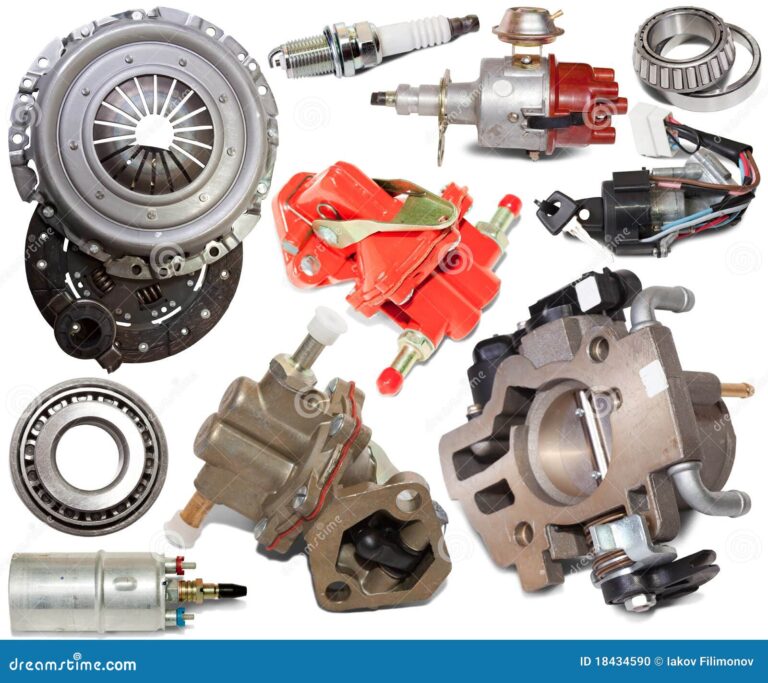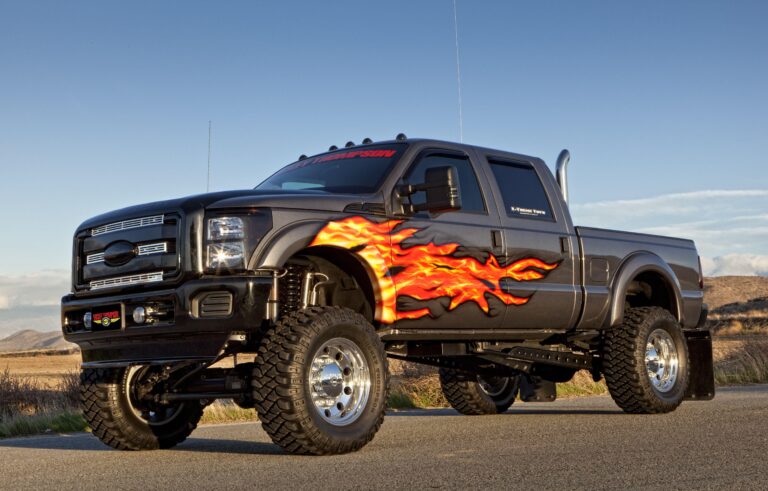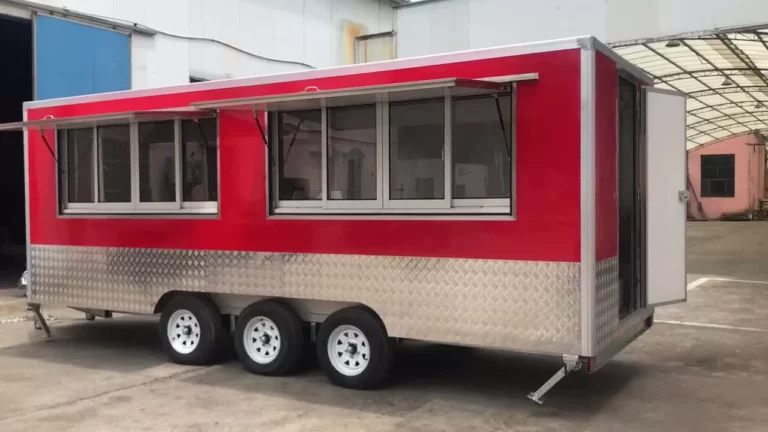LMC 50s Truck Box Panels: Restoring Vintage Authenticity
LMC 50s Truck Box Panels: Restoring Vintage Authenticity cars.truckstrend.com
The rumble of a classic 1950s pickup truck stirs a unique sense of nostalgia, embodying an era of rugged utility and distinctive style. From the iconic Chevrolet Task Force series to the beloved Ford F-100 and the workhorse GMCs, these trucks are more than just vehicles; they are rolling pieces of American history. However, decades of hauling, weather exposure, and simply the passage of time take their toll, often leaving the truck bed – the very heart of its utility – ravaged by rust, dents, and structural fatigue. This is where LMC 50s Truck Box Panels become indispensable.
LMC Truck, a renowned name in the classic truck restoration community, specializes in manufacturing high-quality reproduction parts designed to bring these vintage beauties back to their former glory. Their 50s truck box panels are not just simple replacements; they are meticulously crafted components that provide the structural integrity and aesthetic authenticity crucial for a successful restoration. Whether you’re undertaking a full frame-off rebuild or simply patching up a beloved driver, understanding the scope, benefits, and installation of LMC’s 50s truck box panels is paramount to preserving the legacy and value of these iconic machines. This comprehensive guide will delve into every aspect of these essential restoration components, offering insights, practical advice, and everything you need to know to breathe new life into your 1950s pickup.
LMC 50s Truck Box Panels: Restoring Vintage Authenticity
The Enduring Appeal of 1950s Trucks and the Imperative for Box Panels
The 1950s marked a golden age for American trucks, characterized by their robust construction, evolving designs, and widespread utility. Chevrolet’s "Advance Design" and later "Task Force" series, Ford’s "Bonus-Built" and "F-Series" trucks, and GMC’s equally capable offerings became ubiquitous on farms, construction sites, and city streets. Their timeless appeal continues to captivate enthusiasts today, leading to a thriving restoration market.
However, the very elements that made these trucks so useful – their open beds – also made them vulnerable. Truck beds were constantly exposed to the elements, hauling everything from firewood and tools to livestock and building materials. This relentless exposure, coupled with original manufacturing techniques that sometimes used thinner gauge steel or lacked advanced rust-proofing, meant that the beds were often the first components to succumb to corrosion. Common problem areas include:
- Bed Floors: Prone to rust from moisture trapped beneath mats or spilled liquids.
- Lower Bedside Sections: Susceptible to rust due to road salt, mud, and water splash-up.
- Fender Wells: Often accumulate debris, leading to rust from the inside out.
- Tailgates: Frequently damaged from loading/unloading and prone to rust along seams.
- Cross Sills: These under-bed supports are critical but often rust out, compromising the bed’s structural integrity.

Replacing these compromised sections is not merely about aesthetics; it’s about restoring the truck’s structural soundness, safety, and functionality. LMC Truck addresses this critical need by providing precisely engineered reproduction panels that allow restorers to tackle even the most severe bed damage, ensuring the truck lives on for generations to come.
Deconstructing LMC 50s Truck Box Panels: Types and Components
LMC Truck offers a comprehensive range of box panels to address virtually every section of a 1950s truck bed. Understanding the different types is crucial for planning your restoration:

- Bedside Panels (Left and Right): These are perhaps the most visually impactful panels. LMC provides full bedside panels for various models (e.g., Chevy Stepside, Fleetside, Ford F-100), often available as complete units or sometimes as upper and lower repair sections. They are typically stamped from heavy-gauge steel to match original contours, ensuring an authentic profile.
- Bed Floor Panels: The foundation of the truck bed, these panels are often corrugated for strength and drainage. LMC offers complete bed floors, sometimes in multiple sections (front, middle, rear) or as a single large piece, depending on the specific truck model. Replacing the entire floor is common due to widespread rust.
- Front Bed Panel (Bulkhead): This vertical panel separates the truck bed from the cab. It’s essential for structural rigidity and often includes mounting points for the bed.
- Rear Sill Panel: Located at the very rear of the bed, this panel typically houses the tailgate hinges and often provides the mounting surface for the rear bumper.
- Tailgate Panels: LMC offers outer tailgate skins, inner panels, or complete tailgate assemblies. These are frequently damaged and rusted, making replacements a common necessity.
- Inner Fender Wells (Wheelhouses): These curved panels form the inner structure around the rear wheels, integrating with the bed floor and sides. They are often sold as a pair.
- Bed Cross Sills/Crossmembers: While not strictly "panels," these crucial support beams run horizontally beneath the bed floor, providing structural support and attachment points to the frame. They are almost always replaced when a new bed floor is installed, and LMC offers them individually or in sets.
Most LMC panels are made from heavy-gauge stamped steel, ensuring durability and a close match to original specifications. Many also come pre-primed with an E-coat or rust-inhibiting primer, saving valuable preparation time.
The LMC Advantage: Why Choose Their Reproduction Panels?
Opting for LMC 50s truck box panels brings several distinct advantages for restorers:
- Authenticity and Accuracy: LMC invests heavily in tooling to ensure their panels replicate the original factory specifications. This means correct dimensions, body lines, and mounting points, which are critical for proper fitment and achieving a period-correct appearance.
- Quality Materials and Manufacturing: Unlike thin, flimsy aftermarket parts, LMC panels are typically made from heavy-gauge steel, often meeting or exceeding the original material thickness in critical areas. Modern stamping processes also result in cleaner, more consistent panels with fewer imperfections.
- Availability and Convenience: Finding New Old Stock (NOS) panels for 50s trucks is like hunting for treasure – rare, expensive, and often still requires restoration. LMC’s extensive catalog makes these essential parts readily available, saving countless hours of searching.
- Cost-Effectiveness: While not inexpensive, LMC reproduction panels are generally far more cost-effective than custom fabricating replacement sections or paying exorbitant prices for rare NOS parts. They also save significant labor hours compared to extensive patch panel work.
- Reduced Preparation: Many panels arrive with a protective primer, which helps prevent surface rust during storage and reduces the amount of initial cleaning and priming required before final bodywork and paint.
- Comprehensive Solutions: LMC doesn’t just offer the main panels; they also provide the associated hardware, bracing, and support components, allowing for a complete and integrated restoration.
Planning Your Bed Panel Restoration: Key Considerations
Before you even think about cutting metal, thorough planning is essential for a successful bed panel restoration:
- Vehicle Specificity: Always, always, always verify the exact year, make, and model of your truck (e.g., 1955 Chevy 3100 Stepside, 1956 Ford F-100 Fleetside). Panels are rarely interchangeable across different years or body styles. Consult LMC’s catalog with your specific truck in mind.
- Assess the Scope of Damage: Conduct a thorough inspection. Do you need a full bed replacement, or can you get away with specific repair sections? Sometimes, what looks like a small rust spot can hide extensive damage underneath.
- Skill Level and Tools: Replacing truck bed panels is not a beginner’s task. It typically requires welding (MIG or TIG), grinding, bodywork, and painting skills. You’ll need specialized tools like welders, grinders, body hammers, dollies, clamps, and measuring equipment. Be honest about your capabilities; professional help might be necessary for certain aspects.
- Budget Allocation: Factor in more than just the cost of the panels. Include consumables (welding wire, gas, grinding discs, sandpaper, body filler, primer, paint), specialized tools, safety gear, and potentially professional labor if you outsource parts of the job. Unexpected issues often arise, so build in a contingency fund.
- Desired Outcome: Is this a show-quality restoration, a reliable daily driver, or a work truck? The level of finish and precision required will vary significantly based on your goal.
- Workspace and Storage: Truck bed panels are large and unwieldy. Ensure you have adequate, clean, and dry workspace for disassembling the old bed, test-fitting new panels, welding, and painting. You’ll also need secure storage for the new panels until they are ready for installation.
A Step-by-Step Guide to Installation (General Overview)
While specific steps vary by truck model and panel type, here’s a general overview of the restoration process involving LMC 50s truck box panels:
- Disassembly and Inspection: Carefully remove the old truck bed from the chassis. Document everything with photos and notes. Thoroughly inspect the frame for rust or damage and address any issues before proceeding.
- Removal of Old Panels: Systematically remove the damaged panels, typically by drilling out spot welds or cutting away rusted sections. Take care not to damage surrounding healthy metal.
- Frame Preparation: Clean and treat any rust on the chassis where the new bed will mount. Ensure the frame is straight and level.
- Test Fitment (Crucial Step!): Before any welding, carefully position and clamp the new LMC panels onto the truck. This is the most critical step. Use clamps, jack stands, and even hydraulic jacks to manipulate the panels into their correct alignment. Check gaps, body lines, and mounting points. Minor adjustments are often necessary due to variations in vintage truck frames or subtle differences in reproduction panels.
- Welding: Once satisfied with the fit, begin welding. Use appropriate welding techniques (e.g., skip welding, plug welding, stitch welding) to minimize heat distortion and warping. Patience is key; allow welds to cool between passes.
- Grinding and Smoothing: Grind down welds smoothly. Use body hammers and dollies to achieve a flat, even surface. This stage requires a keen eye and steady hand.
- Bodywork and Priming: Apply high-quality body filler to minor imperfections, sanding it smooth. Apply multiple coats of automotive-grade primer, block sanding between coats to achieve a perfectly flat and smooth surface ready for paint.
- Painting: Apply basecoat and clearcoat according to manufacturer instructions. This is often done off the truck for ease of access and to ensure a uniform finish.
- Reassembly: Once the bed is painted and cured, carefully reassemble any remaining components (tailgate hardware, lights, wood bed strips if applicable). Mount the completed bed back onto the chassis, ensuring proper alignment and torque on all bolts.
Overcoming Challenges in 50s Truck Bed Restoration
Restoring a vintage truck bed is rarely without its challenges, but with foresight and the right approach, they can be overcome:
- Misalignment: Even high-quality reproduction panels can require persuasion. Use a variety of clamps, strategically placed tack welds, and even body hammers to fine-tune the fit. Don’t be afraid to walk away and re-evaluate if frustration sets in.
- Hidden Rust and Structural Damage: Rust has a way of hiding. Always assume there’s more than meets the eye. Thoroughly inspect adjacent areas and be prepared to address additional repairs.
- Warping During Welding: This is a common issue with large, thin panels. Combat it by using proper welding techniques (skip welding, low heat settings), allowing ample cooling time, and using heavy steel backing plates or strong magnets to dissipate heat.
- Budget Creep: Unexpected issues, tool purchases, or a desire for a higher-quality finish can quickly escalate costs. Maintain a detailed budget and track expenses closely.
- Finding Obscure Parts: While LMC has an extensive catalog, some very specific brackets or small components might still be hard to find. Leverage online forums, classic truck groups, and swap meets.
Practical Advice and Actionable Insights
- Measure Thrice, Cut Once: This old adage is gospel in restoration. Double-check all measurements and fitments before making irreversible cuts or welds.
- Invest in Quality Tools: A good quality MIG welder, angle grinder, and bodywork tools will make the job easier and yield better results.
- Don’t Rush the Process: Restoration is a marathon, not a sprint. Patience is your best friend. Rushing leads to mistakes and frustration.
- Seek Knowledge: Join online forums specific to your truck model (e.g., Stovebolt.com for Chevys, Ford-trucks.com for Fords). The collective knowledge of experienced restorers is invaluable.
- Safety First: Always wear appropriate personal protective equipment (PPE): welding helmet, gloves, eye protection, hearing protection, and respirators for grinding and painting.
- Professional Assistance: Don’t hesitate to consult or hire professionals for tasks beyond your skill set, especially critical structural welding or high-end paintwork. It can save you time, money, and headaches in the long run.
LMC 50s Truck Box Panels: Estimated Price Guide
Please note: The prices below are estimated ranges for illustrative purposes only. Actual prices are subject to change based on specific year/make/model, material, current market conditions, LMC Truck’s promotions, and shipping costs. Always consult LMC Truck’s official website or catalog for the most accurate and up-to-date pricing.
| Panel Type | LMC Part Number (Example – for reference) | Description | Estimated Price Range (USD) | Notes |
|---|---|---|---|---|
| Bedside Panel (Left) | 38-xxxx (e.g., 38-9201 for ’55-59 Chevy) | Full Left Bedside Panel (e.g., Stepside/Fleetside) | $450 – $650 | Heavy gauge stamped steel, often pre-primed. |
| Bedside Panel (Right) | 38-xxxx (e.g., 38-9202 for ’55-59 Chevy) | Full Right Bedside Panel | $450 – $650 | Sold individually, check for specific truck models. |
| Bed Floor Panel (Complete) | 38-xxxx (e.g., 38-8900 for ’53-56 Ford) | Complete Corrugated Bed Floor (may be multi-piece) | $700 – $1000 | Essential for rusted out beds; check specific bed length. |
| Front Bed Panel (Bulkhead) | 38-xxxx (e.g., 38-8500 for ’55-59 Chevy) | Front Bed Panel separating bed from cab | $200 – $350 | Crucial for bed rigidity and appearance. |
| Rear Sill Panel | 38-xxxx (e.g., 38-8600 for ’53-56 Ford) | Rearmost bed panel, often where tailgate hinges attach | $150 – $250 | Check for specific year/model variations. |
| Inner Fender Well (Pair) | 38-xxxx (e.g., 38-8800 for ’55-59 Chevy) | Inner Rear Wheelhouses (left & right pair) | $300 – $500 | Integrates with bed floor and sides; often rust-prone. |
| Tailgate Panel (Outer Skin) | 38-xxxx (e.g., 38-9500 for ’53-56 Ford) | Outer skin of the tailgate; requires assembly with inner components | $250 – $400 | Provides the main visible surface of the tailgate. |
| Tailgate (Complete Assembly) | 38-xxxx (e.g., 38-9550 for ’55-59 Chevy) | Full tailgate assembly, ready for paint and installation (may include hardware) | $550 – $850 | Most convenient option if original tailgate is severely damaged. |
| Bed Cross Sills (Set) | 38-xxxx (e.g., 38-8700 for ’55-59 Chevy) | Set of structural support beams for bed floor (typically 5-7 pieces) | $300 – $500 | Often replaced with bed floor; crucial for proper support. |
Disclaimer: Prices are approximate and for guidance only. Please verify current pricing and availability directly with LMC Truck.
Frequently Asked Questions (FAQ)
Q: Are LMC 50s truck panels exact reproductions of the originals?
A: LMC strives for high accuracy in their reproductions, tooling their panels to match original factory specifications as closely as possible. While minor fitment adjustments may sometimes be necessary due to decades of wear on original frames or slight manufacturing tolerances, they are designed to be highly authentic.
Q: Do these panels come painted or ready for installation?
A: Typically, LMC panels come with a protective E-coat or rust-inhibiting primer. They are not pre-painted with the final color. They will require proper bodywork, sanding, final priming, and painting to match your truck’s finish.
Q: Can I install these panels myself, or do I need a professional?
A: If you possess welding, grinding, and bodywork skills, and have the necessary tools and workspace, you can undertake the installation yourself. However, for complex structural components or if you lack experience, professional installation by a reputable body shop specializing in classic cars is highly recommended.
Q: Are LMC panels available for all 1950s truck models (e.g., Chevy, Ford, GMC, Dodge)?
A: LMC Truck has an extensive catalog, focusing primarily on popular Chevrolet/GMC and Ford models from the 1950s. While they offer a wide range, availability can vary by specific year, make, and lesser-produced models. Always check their official catalog or website for your particular truck.
Q: What material are LMC 50s truck box panels made from?
A: LMC panels are primarily made from heavy-gauge stamped steel, often matching or exceeding the thickness of the original factory components. This ensures durability and structural integrity.
Q: How do I ensure proper fitment of the new panels?
A: The most crucial step is always to "test fit" the panels before any welding or permanent attachment. Use clamps, stands, and measuring tools to ensure correct alignment, gaps, and body lines. Referencing factory service manuals or online forums for your specific truck model can also provide valuable guidance.
Concluding Summary
The restoration of a 1950s pickup truck is a deeply rewarding endeavor, a journey that reconnects enthusiasts with a tangible piece of automotive history. Central to this process is the integrity of the truck bed, and LMC 50s Truck Box Panels stand as a cornerstone for achieving an authentic, durable, and structurally sound restoration. By offering accurately reproduced, high-quality steel panels, LMC Truck empowers hobbyists and professionals alike to overcome the ravages of time and rust.
While the project demands patience, skill, and careful planning, the availability of these specialized panels significantly simplifies a complex task, making it more accessible and cost-effective than ever before. From detailed bedside panels to complete bed floors, LMC provides the essential components to rebuild the heart of your vintage truck. Embracing this challenge means not just restoring a vehicle, but preserving a legacy, ensuring these iconic 50s pickups continue to turn heads and inspire admiration for generations to come.






